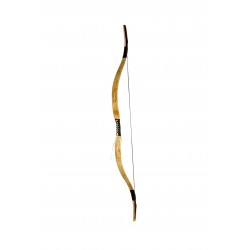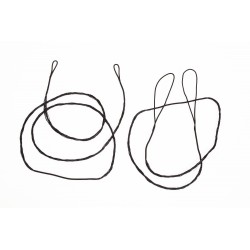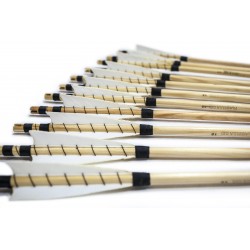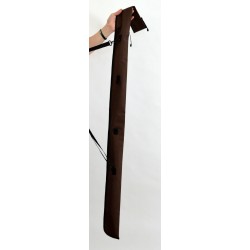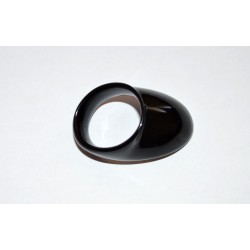Hungarian-Magyar bow with ash 45 lbs
This is one of the nicest forms of bows from our workshop. It’s been very popular since we started to produce it 2003.
Upper lamination is
Ash: There are more than 30 species, in Hungary we can find 3. Its leaf is forked. It bursts into bloom in early spring, dark purple it is. 20-40 m high tree, its bark is light. Due to the legend of the Northen peoples the man became from the ash while the woman from the alder.
Product customisation
Description
Composite bows are different from the Western European simple bows (so called longbows) in a way that in all cases several pieces of horn and wood were stuck together in layers, with bone stiffening. The form and structure of these were extremely diverse, but it is typical of all of them that in un-drawn condition they become bent strongly backwards, and this negative bending also remains in drawn condition in a length of 1-2 hand span at both ends of the bow. Turkish-Tartar composite bows, which represent the best of reflex bows, ensured a relatively high initial speed.
In Basic set we add 12 budget arrows, +1 Dacron string and a standard leather armguard.
In Prime set you’ll receive 12 medieval arrows matching to the bow in spine value, 1 Fastflight string and a bow case. If you want the arrows to be shorter than 32”, please write us!
Product Details
Data sheet
- String length
- 53 ¾ (4 ¾ )”
- Draw weight (lbs)
- 45 lbs
- Draw length
- up to 32"
- Bracing height
- ~7"
- Total length
- 57 1/2"
- Average weight
- 600 g
- Video
- pmNjFrrbu7w
- Good to know
- Regino, the Abbot of Prüm described Magyars in 908 in this way: "They don' kill many with swords, but they do thousands with their arrows, which are shot so skilfully from their bows made of horn, that it is scarcely possible to find protection against them." Magyars, the name by which Hungarians call themselves, arrived to the Carpathian basin in 896 from the southern region of the Ural. They did not pursue a settled way of life for another 100 years, they led looting expeditions to Western Europe and Byzantium. "They find great pleasure mostly in distant fight, lying in ambush, encircling the enemy, imitating back out and then turning back, and dispersing fighting units... They are attracted to machination, they fight from their horses galloping forward or turning back, they often imitate running away as well... Most of the times they stop fighting in the middle of a fierce combat, then a little later they turn back from running, and when you think that you have defeated them already, you find yourself in a mortal danger." (Leo, the Wise) The uniting Holy Roman Empire stopped their marauding lifestyle (933, 955). Taking up Roman Christianity ended the Magyars’ Western campaigns, and from this time on their horse archery tactics were replaced by a Western styles of warfare.
- Length strung
- 55 1/2"
- Product status
- In stock
- Used materials
- wood, fibre glass, horn, epoxy, genuine leather, bandage thread
- Garancia
- 1 év
- Kiszállítás
- Gyors, 1-3 nap



